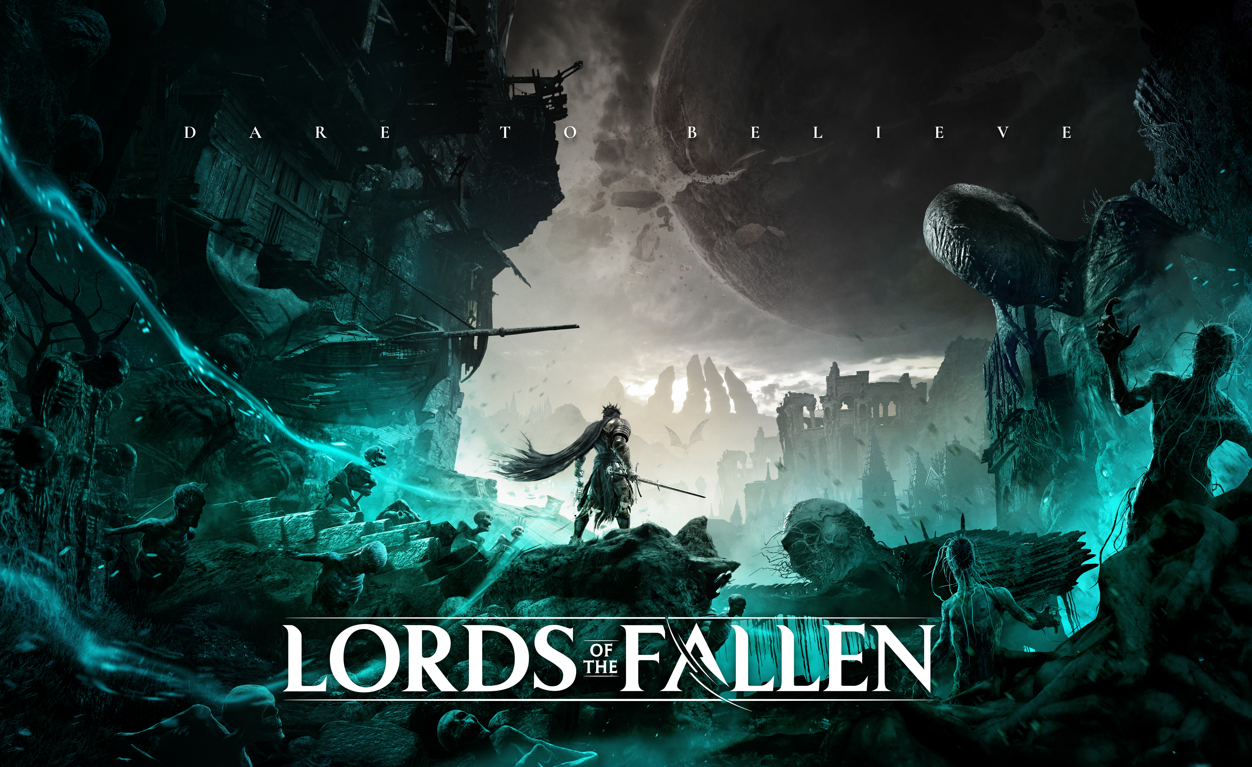As is all the rage these days, 2023’s Lords of the Fallen is both reboot and sequel all in one, and the latest souls-like action-adventure RPG for masochistic players to get stuck into, and the rest of us to get stuck on. It’s been through three developers and a long development cycle, but the end result looks like it hasn’t come out of that process too badly. Crisp graphics, a number of fresh and unique mechanics to bring to the genre, and that same heavy grimdark fantasy design aesthetic that makes all the girls go oooo.
I may be tackling Lords of the Fallen a little differently than other reviewers. I didn’t play the first game of the same name, so I’m not going to have much to say about it beyond a certain respect for the studio (or three studios) and the guts needed to overcome a general consensus that it wasn’t a great game, and rebirth the IP anyway. I’m coming to this one with fresh eyes, and I don’t know any links with the previous game beyond what the story tells me. I have no preconceived ideas and I won’t be comparing it to its predecessor.
So on its own merits, does Lords of the Fallen scratch that souls itch? Is it fallen IP that should never have been raised from the dead, or is it an ascendant and worthy addition to the souls-like pantheon?
Fallen Angels
In an interesting turn from the usual souls idea, the character you think is the lead gives up his claim to a certain strange blue lamp just moments into the first cutscene, only to get brutally murdered (and I mean brutally). It turns out he no longer wants the curse of being repeatedly raised from the dead. The lamp falls into a storm grate and raises up a skeleton rotting at its base. That’s you. Now you are the chosen one of the lamp of immortality. Good luck.
The land of Axiom is rotten and blighted, studded with beacons that hold sealed away a great Sauron-level evil, the demon Lord Adyr. But as his taint seeps out across the land, it has slowly corrupted everything and is close to pulling down the constraints that hold him imprisoned. The Hallowed Sentinels, a league of knights meant to protect the realm, have fallen themselves, corrupted by Adyr’s pernicious seeping aura. And into this world comes you the player, fated to be resurrected as long as you retain hold of the Umbral lamp, and set the task of ridding Axiom of its corruption – every monster, fallen Sentinel, and demon lord on your way to re-sealing Adyr or defeating him.
Lords of the Fallen feels like the souls-like equivalent of Lord of the Rings even more than Dark Souls. There’s Nazgul-looking wraiths, an eye of Adyr like the eye of Sauron scouring the land, and many armor and weapon motifs that’ll feel very like Middle-Earth. It’s rare, but enemies talk a bit like orcs do, with their raspy evil voices.
Soulslikes are not generally known for their stories, with world-building, history, and lore usually coming to the fore instead. Lords of the Fallen really tries to change that with slightly more in the way of plot and a few interesting narrative mechanics that elevate it in the plot department. One interesting story idea that I really liked was that a few bosses, especially those of fallen good guys, would thank me for freeing them from corruption after they’d revived. One such at the start is Pieta, a fallen Hallowed Sentinel, who then becomes your source of healing blood and Sanguinarix upgrades. It’s just a nice touch, that helped solidify Pieta in my mind, and give context to the Hallowed Sentinels as separate from other enemy types.
All that being said, there’s still not what I would call much of a plot and Lords of the Fallen does not break with the souls-like tradition of favouring a nameless warrior and your own fill-in-the-blanks adventure.
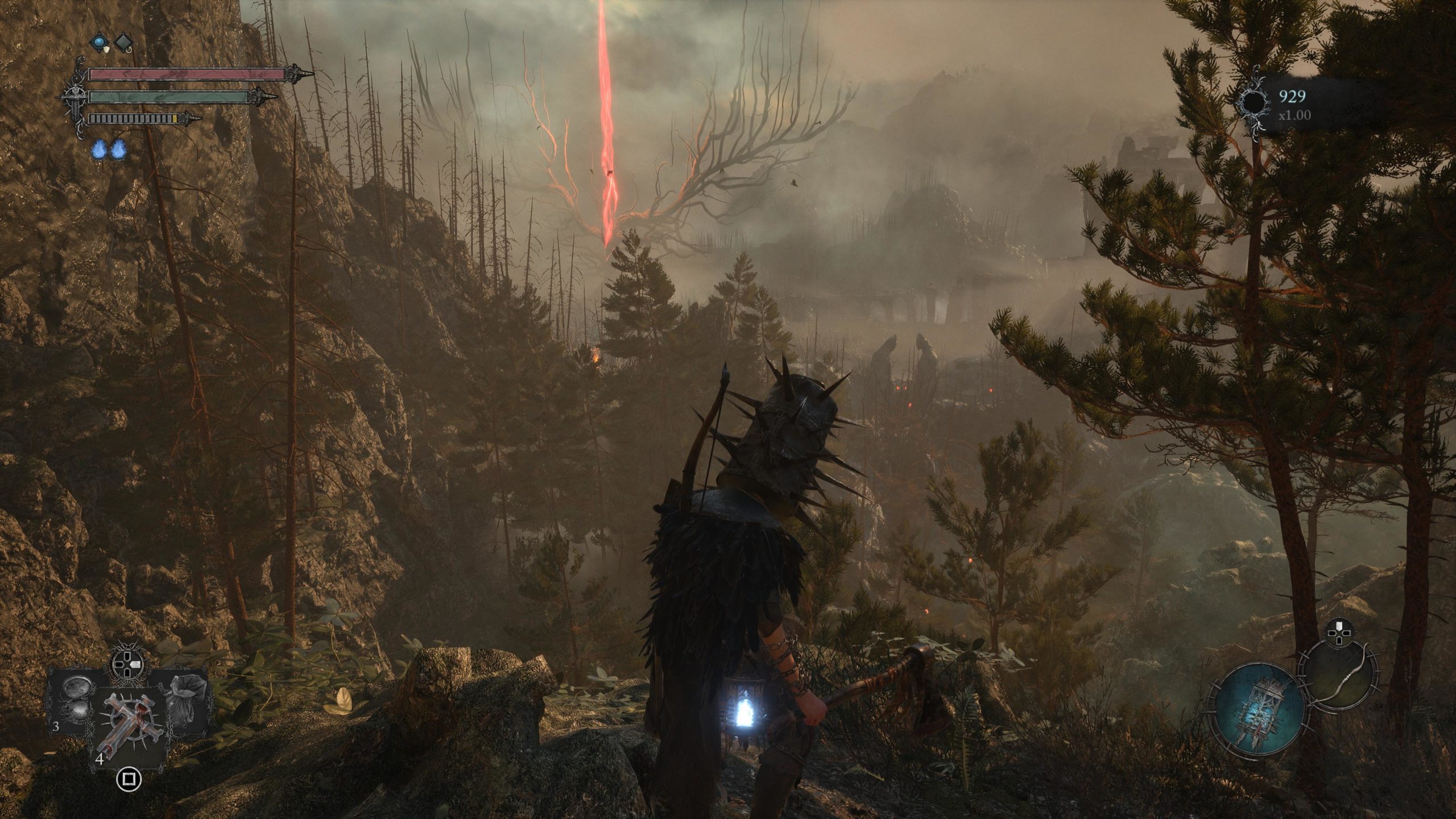
The Fall of the House of Umbra
The moment-to-moment gameplay of Lords of the Fallen is going to be familiar to any Souls-like player in the last ten years. Explore each new area carefully and cautiously, looking in every nook and cranny for shining items, weapons, and upgrades. Hypervigilance in every area as you slowly uncover every enemy and learn to take them down. The gradual increase in tension as you hold more and more souls (or Vigor here) and need to desperately find a Vestige (bonfire). The debate whether to spend vigor to upgrade or push on into the next area. The debate whether to rest and recoup your health, only to respawn all the enemies you cleared. The basics described here are true of Lords of the Fallen, but you could be playing any of a dozen or so souls-likes in the last ten years.
The important question is where does Lords of the Fallen differ? As mentioned, Lords of the Fallen differentiates itself in a few ways; the lamp of immortality, the two worlds overlapping mechanic, the world of Umbral itself.
The Umbral Lamp comes into its own exploring Axiom, because everywhere you go you’re compelled to hit L2 and check out what it looks like in Umbral. You could be missing secret areas, better routes, disgusting creatures, or ways to beat them, all hidden ‘in plain sight’. The Umbral lamp just instantly adds this literal second dimension to everything, elevating the exploration aspect of the game above a souls-like just bent on combat. We’re all looking for the ways Lords of the Fallen sets itself apart, and bone-filled, spinal, demonic, dying Umbral is the big one.
Umbral is an awesomely designed place. Axiom can be horrible enough, but often the best and truly ickiest designs lie in the most innocuous or beautiful areas, only you must raise your lamp to expose them. It’s full to bursting with skulls and spinal walkways, hanging corpses, and monstrosities. Often when just innocently looking through the lamp, you reveal enemies who immediately attack and pull you through into the world of the dead. They’re just right there, and it made me realise that the game is loading both worlds at all times. It’s not just a mechanic used a few scripted times – it’s everywhere, all the time.
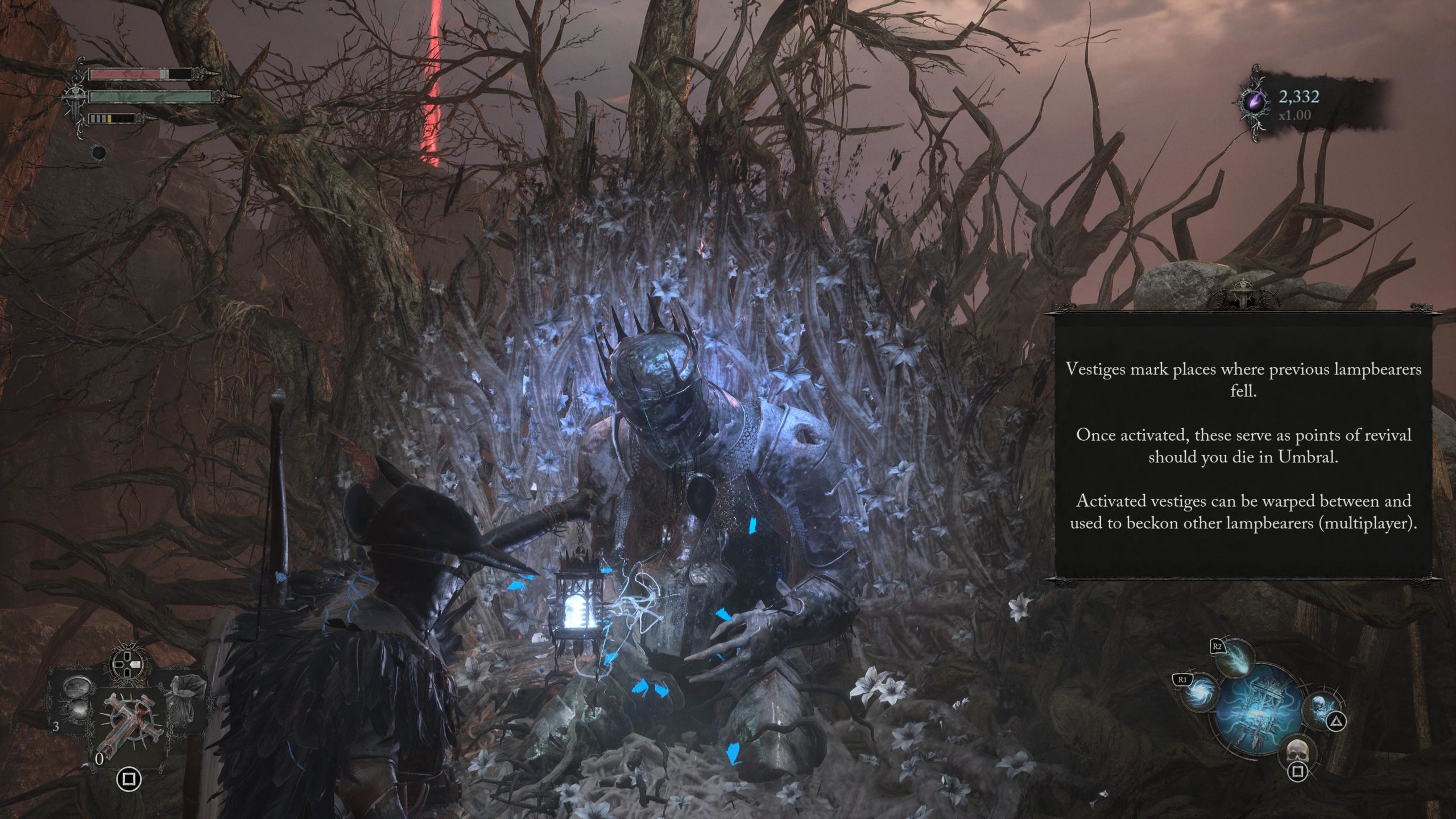
However within one of its greatest strengths, lies one of Lords of the Fallen’s weaknesses. That same dual-world mechanic, loading and playing in both worlds simultaneously seems to strain the hardware and coding. Umbral experiences a fair bit of slow-down, framerate dips, and some latency of commands as a result. The more enemies loading, and chasing you, the worse it gets.
One tactic Souls players will know is the gauntlet run, just barrelling through enemies without engaging, in order to reach the next vestige or safe zone, and save your hard-earned souls. While in Umbral, and before the Day zero patch, this tactic could be virtually game-breaking, forcing the game to load dozens, maybe hundreds of enemies, slowing down and struggling to the point it may just crash. Thankfully it is auto-saving fairly constantly, so I never lost huge amounts of progress. I’m also glad to report that the patch has significantly resolved most of this issue.
While in Umbral the gameplay changes. Now you’re being hunted. In the world of the dead, every moment you spend is clocking up more and more awareness of the enemy that you are there with them. And they don’t like it. There’s even a final glowing red enemy reaper that comes out when you’ve exhausted your welcome, and he can virtually one-shot you. It’s more tense because in Umbral, you don’t have your second chance – essentially when you die, you slide into Umbral and get another chance to beat your opponent. But if you are already in Umbral, that’s it.
Lords of the Fallen leans on the long-range bows and crossbows a lot more than I’ve seen in any souls-likes I’ve played. You get an ammo block of arrows that rejuvenates at a vestige, so you’ve always got some 10-12 shots without having to use up ammo items. It’s also used more because of the high verticality of level design in the game. There’s an area maybe two or so bosses into the game that will separate the long-term players from the casual – called Pilgrim’s Perch. It is a vertical balcony and walkway hellscape on the side of a cliff face, and it goes on forever. Long-range enemies take pot shots from afar, demanding you use your bow to take them down; enemies run at you with headbutts that can knock you flying off the entire level; and then there’s Umbral just waiting to introduce the ‘Hunt’ on top of everything else.
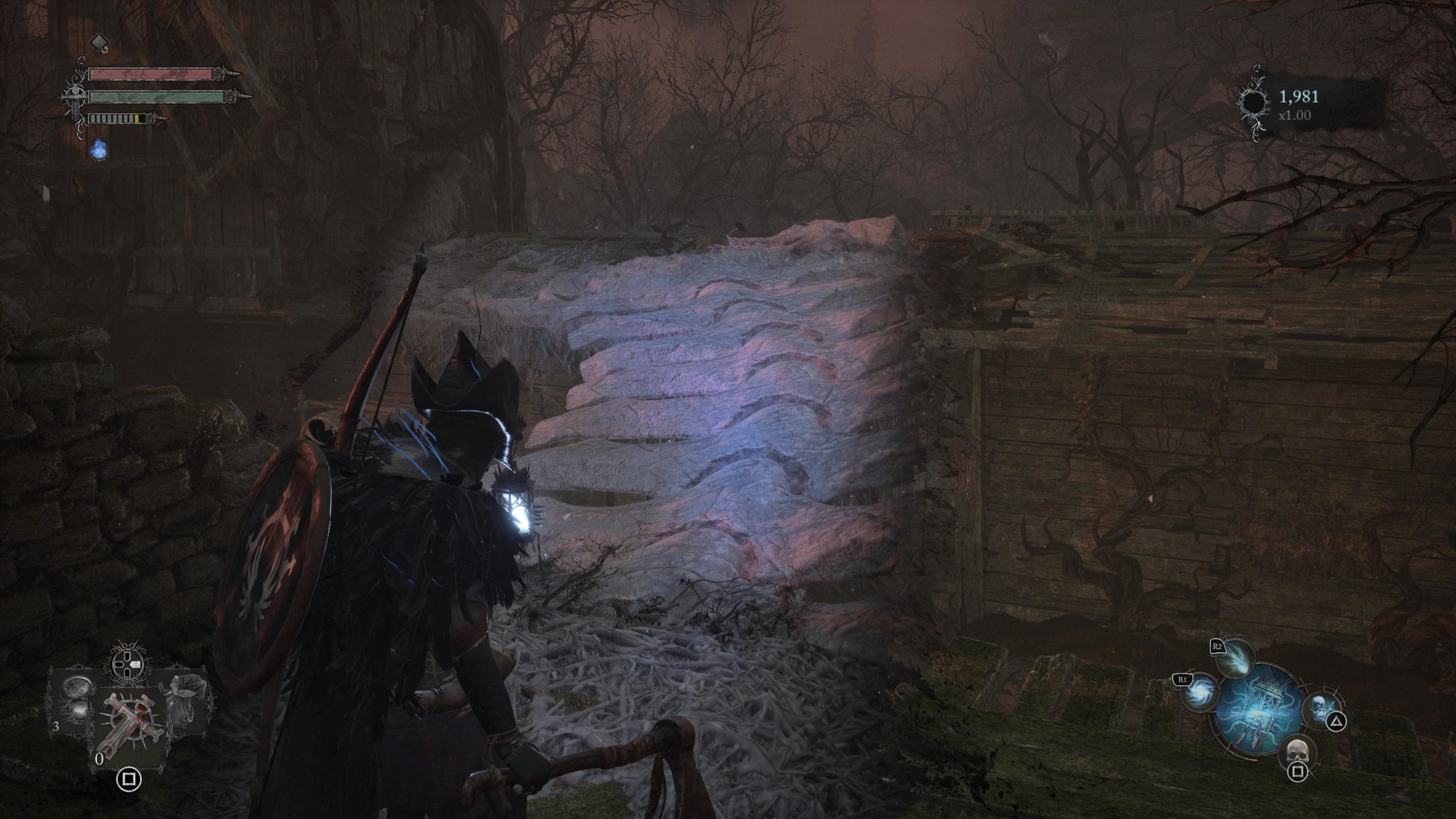
Mordor… I Mean Mournstead
So we’ve got this far without talking about combat, because guess what, it’s not the entire experience despite what plenty of critics will tell you. Lords of the Fallen’s new iteration is a souls-like through and through, harping close to the Dark Souls framework of difficult and often frustrating combat. Yes, enemies are hard, yes the gauntlets are long and unforgiving, and yes the Vestiges are few and far between, far closer to the original idea of having to run a gauntlet to get to the boss, rather than the more forgiving way these things have tended to become ten years later.
Lords of the Fallen doesn’t quite fall into the Souls frame of slow methodical combat, it doesn’t quite match the Bloodborne style for aggressive combat, and it’s not the precise parrying experience of the recent Lies of P, or Sekiro. Lords of the Fallen wants to be accessible to all, with classes that target all the styles I’ve mentioned and many more besides. Wanna play as the naked Elden Ring Let-Me-Solo-Her, there’s that. There’s a Bloodborne class with an axe. There’s knights and magic users.
The actual combat uses a bit of everything that’s worked in the past. You’ve got your dodges, that are relatively forgiving and have a nice amount of invincibility frames. You’ve got your parry and block, which works in conjunction with what’s called withered health – a sort of Bloodborne-like aggressive behaviour mechanic. Block and you’ll take a chunk of grey, or withered health. This can be recouped through some hits on the enemy, as long as you don’t get hit yourself. If you take a hit, you’ll lose the potential recoverable health and a bit more besides. It’s a system that is close to the guard health of Lies of P, and Bloodborne, but not quite either. I guess it rewarded aggressive behaviour and increased tension, and I appreciated a method of recovering health in Umbral, because I was usually there after using up all my Sanguinarix and dying.
Going back to parry and block – these can hurt the enemy’s posture, which is taken straight out of Sekiro and Lies of P. There’s a little extra circle around the lock-on circle that shows posture and when broken, usually with a final perfect parry, you get chance to do a punishing attack, one that, for enemies at least, is often a finisher. You can also perform strong attacks with a bit of wind-up, and these deliver fair posture damage too. The game’s small amount of stealth play usually involved this strong attack from behind and then the punisher, but stealth is not Fallen’s strong suit.
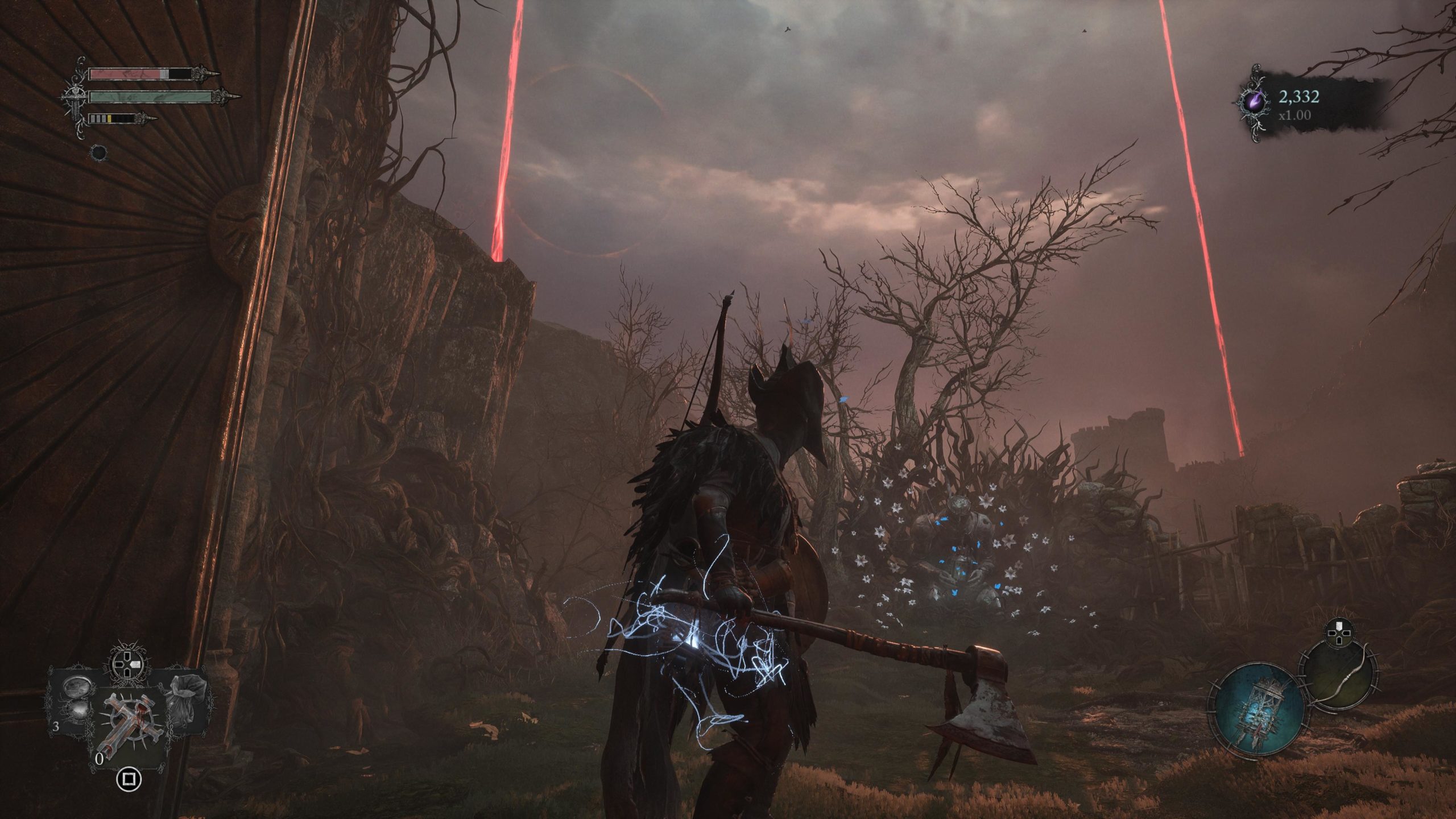
On top of the withered health, there’s even more combat to learn in Umbral. Or coming through from Umbral. Sometimes enemies will have set up a little shrine, drawing these strange blue glowing tethered fetal creatures to it. You can only see them using the lamp or in Umbral. In Axiom they provide a shield to the enemies within range, making their health rejuvenate faster than you can hack it down. So how do you combat it? Well, the lamp can shine into Umbral, see the fetal bugs, and then literally rip their souls out, killing them and dropping the shield.
Some large enemies and bosses act like shrines of their own, surrounded by these fetal bugs. It’s a great system, and it’s hard to find the time and moment to lift the lamp and perform the 2-3 second loop of ripping out a soul. My personal fave is that there’s an even more vigorous soul-ripping manoeuvre. Some bosses in Umbral can be soul-ripped at points, when they expose inner body parts. You just have to suddenly hit the button, rip out their soul and start pummelling.
It was probably inevitable that we’d get to the point where a game tried to implement every system Fromsoft had invented all at once, and a whole slew of its own on top. It’s pretty subjective whether it works or not, and probably depends on your play style. If you were a parrying player, the parry is going to feel a little difficult to make the most of, and unless you do it perfectly you’re going to lose that withered health on the second, third or even fourth hit. If you like dodging, it’s there and it’s pretty usable. If you like aggressive, you can do that. And if you like tanking knights, you can do that. It’s a breadth of combat styles and possibilities that’s pretty welcome, but can feel a little like no one style has been done as well as it has in other games.
Enemies and bosses alike can have some pretty unfair feeling health bars. But at the same time, I always felt there was fairness within. If I learned their movesets, and just got better, things often fell into place. Pieta was a good early example, when I finally beat her the attempt was convincing, because I’d learned every move and could counter it effectively. In every paragraph above, I’ve failed to say that it’s fun. Lords of the Fallen falls on the side of being compelling enough to drive you to keep playing, and fun enough and satisfying enough in combat to weigh against the inevitable frustrations, long runs to bosses, and the steep learning curve these games employ. I’m also happy to report they have left degradation of your weapon on the blacksmith’s floor.
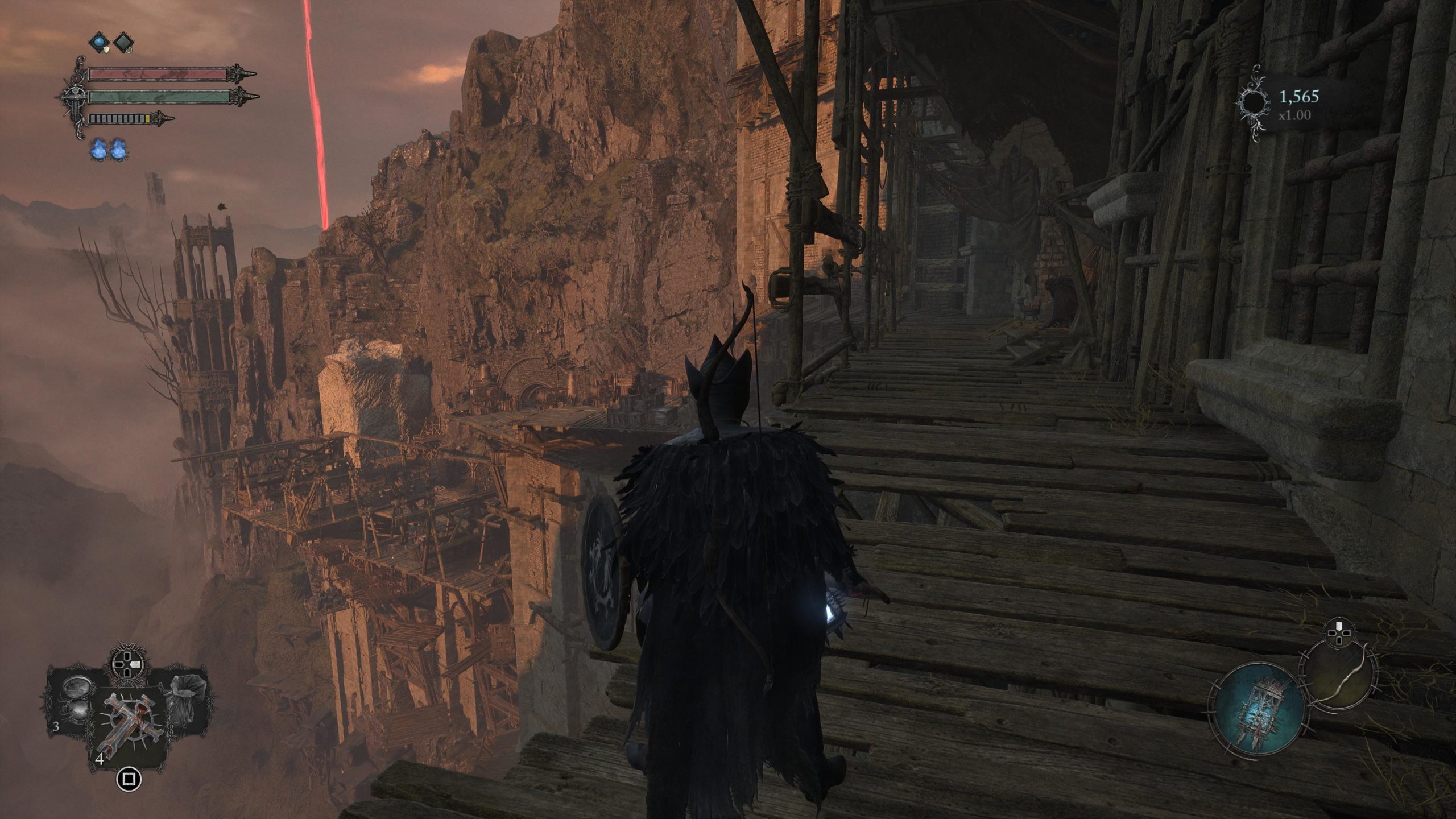
Freefall
There’s a good Bloodborne-esque soundtrack in Lords of the Fallen, full of sweeping epic motifs and creepy patterns. I can’t say a particular piece ever quite caught on in my head or became an earworm, but the whole thing is welcome and well-crafted. The wastes of Axiom and Umbral don’t hold a lot of talkative NPCs but the ones that exist are generally well-voiced and less confusing and vexing than Fromsoft’s. They’re just a bit more straightforward.
The Unreal Engine 5 really makes Lords of the Fallen look fantastic throughout. It’s incredibly detailed, it’s beautiful, and then it’s downright creepy. My final gripe is that I didn’t get to use much in the way of online options or co-op for this review. There is the inevitable you-can’t-pause which I absolutely detest in souls-likes across the genre. Again it’s the same as others, but why, if you turn off invasions for example, can you not just have pause back?
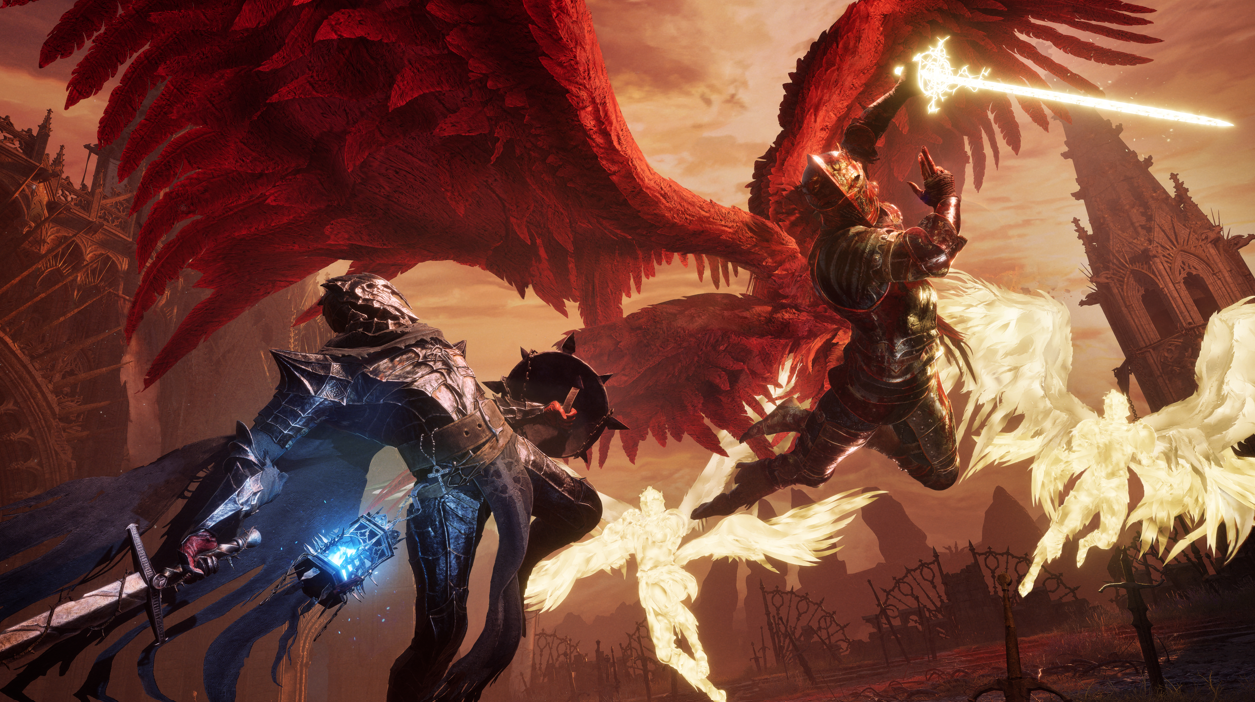
The Fall And Rise Again
Lords of the Fallen has redeemed an IP, and come flying in at the top of a handful of titles that are not Fromsoft’s own, but reign atop the souls-like genre. It has earned mention alongside Nioh, Wo Long, and Lies of P, as the best the genre gets when not handled by its inventors. I would even say Lords of the Fallen and some of those I mentioned are better than Dark Souls 2 for example, and so can be easily nestled right underneath the greats of Bloodborne, DS 3, and Sekiro.
What Lords of the Fallen manages is quite impressive. It manages to handle a breadth of combat options without being impossible to master, and without alienating any sub-genre groups that prefer one or another. It’s more accessible than Elden Ring, more playable, and more fun. The breadth of options could have made it feel derivative, and at the same time unable to find its own identity, but then it gives you Umbral.
Umbral is another world atop the one you’re in, dripping in icky creepy invention. But beyond a graphical gimmick, it permeates every level of the game; it breathes life into exploration; it adds layers to survival and the second chance of falling into the world of the dead; it creates tension in the ratcheting up of enemies and the coming death sentence; and it recreates combat anew, with withering and soul-ripping. Umbral is the identity that Lords of the Fallen needed to go from accessible and derivative, to unique, inventive, and essential.
Lords of the Fallen could have been another accessible cookie-cutter souls-like. But with the addition of Umbral, the world of the dead layered upon the living, it breathes new invention into exploration, tension, and unique combat, managing to cement itself as essential in an increasingly crowded and quality genre.

Lords of the Fallen is available now on PlayStation 5 (review platform), Xbox Series S|X, and PC via Steam.
Developer: HEXWORKS
Publisher: CI Games
Disclaimer: In order to complete this review, we were provided with a promotional copy of the game. For our full review policy, please go here.
If you enjoyed this article or any more of our content, please consider our Patreon.
Make sure to follow Finger Guns on our social channels –Twitter, Facebook, Twitch, Spotify or Apple Podcasts – to keep up to date on our news, reviews and features.
